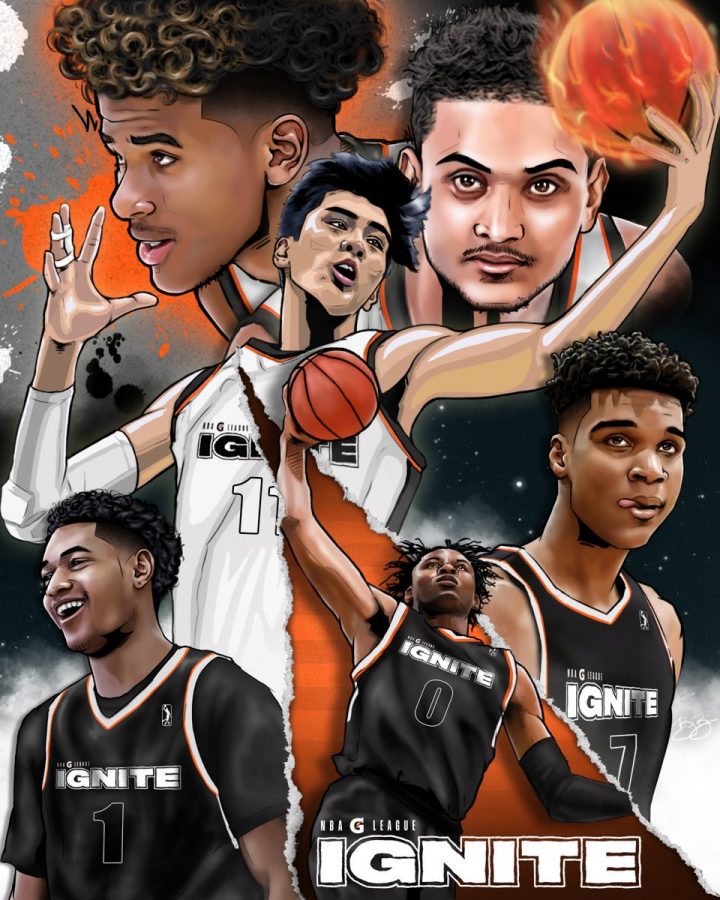The G League vs. The NCAA
Which is the better option for high school athletes projected to be NBA caliber athletes?
May 12, 2021
High school athletes are now able to skip college and go straight into the NBA’s Gatorade League where they will face stronger and more athletic competition, as well as getting paid for their performance which is not available for collegiate athletes. Although this route does have its benefits for some of the elite high school players, who are looking for an immediate route to the NBA, there could also be major setbacks with what the G League provides.
The new age limit of allowing 18 year-olds to play, who are fresh out of high school, is providing an opportunity for these young players to show that they really do belong in the NBA. These high school graduates will be playing against grown men and demonstrating their ability to score and play defense. Not only will there be great competition, but all 30 NBA franchises will be scouting every G League game. Players are receiving recognition from the G League in regards to their playing ability, while also getting paid. This gives players a league to prove that they belong with the best of the best.
There are some possible downsides to entering the G League right after high school. If a player is overmatched by the level of competition, his audition time in the G League could be very brief. Currently, if a player fails in the G League, he is not allowed to return to college to play because his amateur status is gone. Athletes entering the G League need to perform immediately or risk not getting drafted or watching their draft stock drop. If a player gets cut early, the reality of not having a professional career is legitimate. Some athletes may not be ready for that level of competition, so jumping straight into the professional ranks could hinder the growth of these athletes since they would be out-performed by other athletes. Over time, this which would once again lower a player’s draft stock.
The NCAA provides high level coaching and publicity, but there are the drawbacks in regards to not playing against the best competition. There is also currently no paycheck getting sent in the mail to a college player. This is hard on some students financially and it is a major reason why the NCAA is introducing legislation for college athletes to make money off of the names and likeness in the coming year.
Both of these routes have their positives and negatives based on the player that is coming out of high school and his potential to succeed at a high level playing a very competitive sport that millions of people around the world watch. These athletes may have what it takes to succeed, but it might take longer which is what the college route is all about. Some players do believe that they are already ready for the NBA and will take the quickest and smartest route to get there. This overall competition between the G league and the NCAA is not really a competition at all. Money will once again determine where the most talented players with potential land. Sadly, the idea of earning a four-year degree from a university has lost some of its luster, and that’s a shame. The one-and-done collegiate player has given universities a blackeye in regards to exposing the education of a young man as a farce. NCAA or G League is all about making ticket sales or TV ratings. The potential of a player to actually earn a few dollars in the G League could easily sway the top 18 year-olds from ever looking at a university program again.



